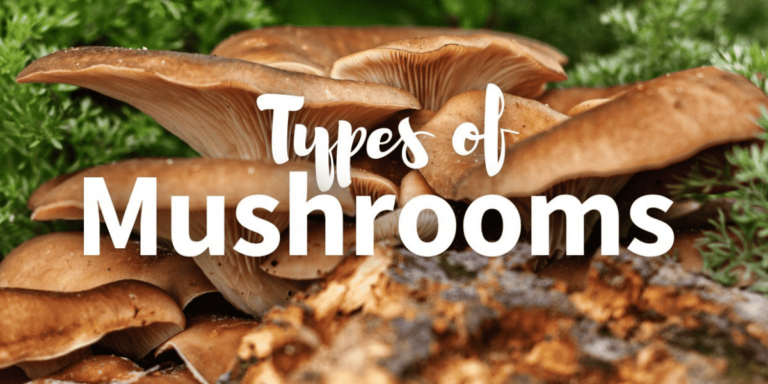Mastering Adjectives in English with Examples

Adjectives are vital in English, enhancing communication by adding detail and precision. These descriptive terms alter nouns or pronouns, offering more insights into people, places, or objects.
Their versatility allows adjectives to enrich descriptions, aiding speakers or writers in vividly portraying subjects, thus ensuring clearer comprehension for the audience. Depending on their form and the word they modify, adjectives can assume various positions within a sentence.
This piece delves into the definition of an adjective and explores its role within sentences, illustrated with examples of adjectives in action.
What Is An Adjective?
An adjective, put simply, is a word that paints a picture of a noun. These words infuse sentences with vivid details. For instance, when describing a tree, simply saying “It is a tree” provides a basic idea. But by adding an adjective like “large,” or even more detail with “large” and “leafy,” the listener gets a much clearer image of the object under discussion. The bold words in these examples are the adjectives, illuminating and refining our understanding of the subject.
Types of Adjectives in English
Descriptive Adjectives
Descriptive adjectives vividly portray a quality or characteristic of a noun. They’re employed to enrich our understanding of the noun by painting a detailed picture. Examples of descriptive adjectives encompass various aspects:
Color: red, blue, green Size: large, small, narrow Shape: square, round, triangular Texture: smooth, rough, spiky
Here are a couple of sentences demonstrating the use of descriptive adjectives:
Her hair is long and wavy. The elderly man strolled leisurely down the narrow street.
Demonstrative Adjectives
Demonstrative adjectives pinpoint ‘which one’ is referenced before a noun. Words like this, that, these, and those function as demonstrative adjectives.
Examples:
- This book is interesting.
- Those houses are expensive.
Interrogative Adjectives
Interrogative adjectives precede nouns in questioning. Primary interrogative adjectives include what, which, and whose.
Examples:
- Which car do you prefer?
- Whose jacket is this?
Possessive Adjectives
Possessive adjectives indicate ownership. Words like my, your, his, her, its, our, and their are examples.
Examples:
- This is her umbrella.
- The dog wagged its tail.
Quantitative Adjectives
Quantitative adjectives express the quantity of a noun or pronoun. They can be exact (specific numbers) or approximate (words like few, many, several, etc.).
Examples:
- She has three apples.
- He has many friends.
Proper Adjectives
Proper adjectives, derived from proper nouns, are capitalized. They often describe nationalities, languages, ethnicities, or names.
Examples:
- The Japanese culture is fascinating.
- The Orwellian society is well-known in literature.
Adjective Order
English follows a specific sequence when arranging adjectives preceding a noun. This order ensures natural-sounding and easily comprehensible sentences. The correct sequence for adjectives in English is:
Opinion
Opinion adjectives express the speaker’s viewpoint about a noun. Usually, they precede other adjectives.
Examples:
- beautiful
- delicious
- incredible
Size
Size adjectives describe a noun’s dimensions and usually come after opinion adjectives.
Examples:
- small
- large
- tiny
Age
Age adjectives convey relative age and typically follow material adjectives.
Examples:
- old
- new
- ancient
Shape
Shape adjectives describe the geometric form of a noun and come after size adjectives.
Examples:
- round
- square
- triangular
Color
Color adjectives depict the hue or shade of a noun and follow shape adjectives.
Examples:
- red
- blue
- yellow
Origin
Origin adjectives specify the source or where the noun comes from.
Examples:
- Japanese
- Asian
- European
Material
Material adjectives indicate what a noun is made of and follow color adjectives.
Examples:
- wooden
- metal
- plastic
Arranging multiple adjectives before a noun in the correct order is crucial for clarity and natural sentence flow. For instance:
Incorrect: She saw a red old small hat. Correct: She saw a small old red hat.
Here, the order is size (small), age (old), and color (red).
Besides adjective order, distinguishing between attributive (before the noun) and predicative (after a linking verb) adjectives is important:
Attributive: The green car is parked outside. Predicative: The car outside is green.
Following the proper order of adjectives and understanding their attributive or predicative roles ensures clear and natural English language usage.
How Important Are Adjectives?
An adjective serves to depict a noun’s color, size, condition, senses, quantity, appearance, time, or personality. Moreover, adjectives facilitate comparative expressions.
Beyond describing tangible objects, adjectives also characterize intangible aspects. For instance, describing someone’s personality: “My father is an intelligent man.”
They’re instrumental in appealing to the senses, capturing visual, taste, smell, sound, and emotional attributes.
In essence, adjectives are a ubiquitous part of speech, employed almost instinctively in both spoken and written language.
Questions to Identify Adjectives
Adjectives are often identified by asking specific questions such as how many, what color, which one, or what type. The answers to these questions reveal the adjectives within a sentence.
Avoid Overusing Adjectives
When writing, opt for adjectives that enrich your content with purpose. While they can bring precision to nouns, an excessive use of adjectives can burden your text. Resist the temptation to use adjectives solely for aesthetic purposes or to compensate for weaker nouns. Instead, opt for stronger nouns.
Gradability
Most adjectives can be graded, allowing for modifications of their meaning using adverbs like extremely, slightly, fairly, and very. Pairing gradable adjectives with adverbs enables adjustments in intensity.
Example:
- The ship was very big.
- She moved extremely slowly.
Adjective or Adverb
Adjectives modify pronouns and nouns, while adverbs modify verbs. Many adverbs have an -ly suffix. Words like quickly and dangerously exemplify adverbs with this suffix.
Example:
- Adjective: The girl is bad.
- Adverb: The girl performed badly in the final test.
In the first instance, the girl herself is being described. In the second, it’s the girl’s performance that’s being addressed.
Examples of Adjectives in Detail
Descriptive Adjectives Examples
Descriptive adjectives, often the first type that comes to mind, lend clarity and precision to our writing. They modify pronouns or nouns by attributing qualities to them, usually preceding the noun.
Examples:
- The blue dog saved the day.
- The horrid woman cursed at me.
- The smiling cat hid behind the couch.
Distributive Adjectives Examples
Distributive adjectives point to specific nouns, typically preceding singular nouns. Words like any, each, every, neither, and either fall into this category.
Examples:
- I do not want either jacket.
- I do not want any candy.
- Each choice is miserable.
Possessive Adjectives Examples
Possessive adjectives indicate ownership. Words like her, his, their, whose, your, its, our, and my fall into this category.
Examples:
- I liked his song.
- I love your jacket.
- I lost our money.
Interrogative Adjectives Examples
Interrogative adjectives pose questions. What, which, and whose are examples of interrogative adjectives.
Examples:
- Whose shoes did you take?
- Which dress will you wear?
- What dog did you adopt?
Indefinite Adjectives Examples
Indefinite adjectives don’t specify nouns. Words like no, few, any, several, and many fall into this category.
Examples:
- I saw several friends over the holiday season.
- I have few friends.
- I have no family.
Sequence Adjectives Examples
Sequence adjectives assign numerical values to nouns without using ordinal numbers.
Examples:
- I enjoyed the first read.
- I was the second child.
- My third doctor made a difference.
Proper Adjectives Examples
Proper adjectives derive from proper nouns and are capitalized to align with their sources.
Examples:
- I have a German grandmother.
- She enjoyed Shakespearean plays.
- Canada is an English and French-speaking country.
Quantitative Adjectives Examples
Quantitative adjectives alter pronouns and nouns numerically, answering questions about quantity.
Examples:
- She wants three children.
- She keeps her four dogs in the house.
- I have two jackets from which to choose.
Adjectival Nouns Examples
Nouns that modify other nouns act as adjectival nouns or noun modifiers.
Examples:
- Sports car
- Strawberry salad
Alternatively, adjectives can function as nouns when describing groups of people, taking the noun’s place after “the.”
Example:
- The young people would change to the young.
More Examples of Descriptive Adjectives
Adjectives can describe various attributes, from appearance to sensory perceptions, size, time, emotions, personalities, situations, and more.
Taste
- Delicious
- Bland
- Bitter
- Sweet
- Tasty
Touch
- Soft
- Windy
- Oily
- Smooth
- Cold
Sound
- Noisy
- Whispery
- Shrill
- Silent
- Hissing
Size
- Gigantic
- Huge
- Minute
- Tiny
- Wee
Shape
- Narrow
- Hollow
- Straight
- Rotund
- Crooked
Time
- Late
- Old
- Slow
- Speedy
- Daily
Amount
- Lots
- Many
- Ample
- Sparse
- Enough
Emotion
- Excited
- Amused
- Angry
- Grumpy
- Bored
Personality
- Generous
- Happy
- Smart
- Sassy
- Jaunty
Appearance
- Attractive
- Fat
- Spotless
- Confident
- Plain
Situation
- Nasty
- Aromatic
- Illegal
- Rainy
- Worse
Different Forms of Adjectives
Adjectives come in various forms, such as comparative, superlative, and absolute. This section aims to briefly explore these forms and offer examples to demonstrate their usage.
Comparative Adjectives
Comparative adjectives are used to compare two things or people, indicating a higher or lower degree of a certain quality. They can be formed by following these rules:
- For one-syllable adjectives, add -er to the end (e.g., tall becomes taller).
- For two-syllable adjectives ending in -ful, -ing, -y, or -y preceded by a consonant, change -y to -i- and add -er (e.g., happy becomes happier).
- For adjectives with two or more syllables, use more or less before the adjective (e.g., beautiful becomes more beautiful).
Superlative Adjectives
Superlative adjectives compare three or more things or people, expressing the highest or lowest degree of a certain quality. To create a superlative adjective, observe these guidelines:
- For one-syllable adjectives, add -est to the end (e.g., tall becomes tallest).
- For two-syllable adjectives ending in -ful, -ing, -y, or -y preceded by a consonant, change -y to -i- and add -est (e.g., happy becomes happiest).
- For adjectives with two or more syllables, use most or least before the adjective (e.g., beautiful becomes most beautiful).
Absolute Adjectives
Absolute adjectives portray qualities that cannot be compared or intensified. They depict a state or condition that exists in an all-or-nothing manner, lacking degrees in between. Common examples of absolute adjectives include:
- Unique
- Perfect
- Complete
- Dead
- Pregnant
As these adjectives denote an absolute state, they should not be utilized with comparative or superlative forms.
Adjective Placement
Where to Place an Adjective in a Sentence
There are three types of adjective placement in sentences:
Attributive Adjectives
Attributive adjectives come before the noun they modify. For instance, “a clear day” exemplifies this type.
Examples:
- She is a pretty girl.
- This is my green dress.
- Today, we will have heavy rain.
- Ants have tiny legs.
- It is a hot day.
Predicate Adjectives
Predicate adjectives follow a linking verb. Verbs like seemed, are, am, is, was, were, and looked precede these adjectives. For example, “I was famished after dinner” showcases this type.
Examples:
- This sandwich is tasty.
- The boy is tall.
- My cat’s eyes are yellow.
- The cake is not healthy.
- My daughter is beautiful.
Postpositive Adjectives
Postpositive adjectives come immediately after a pronoun or noun. For instance, “tickets available” is an example of a postpositive adjective.
Positions of Adjectives in a Sentence in Detail
To craft a grammatically sound sentence, proper adjective placement is crucial. Let’s explore the various positions:
- Attributive adjectives precede the noun they modify, like in “a pretty girl” or “my green dress.”
- Predicate adjectives follow the noun they modify, as in “this sandwich is tasty” or “the boy is tall.”
- Some verbs allow adjectives to follow them to modify their meaning. Verbs like appear, become, go, get, turn, feel, and keep can be modified by adjectives.
Examples:
- I feel amazing after my spa day.
- He has become lazy after not having a job for weeks.
- The dog appears aggressive.
- Adjectives can also come after the verbs to smell, to taste, to sound, and to look.
Examples:
- That pizza tastes fantastic.
- The music sounds good.
- It looks stunning.
- That smells awful.
Adjectives Without A Noun
Adjectives can stand alone without a noun. For instance, in the phrase “He is rich,” the adjective is used with the pronoun “he,” but it can also function independently as simply describing something as “rich.” An adjective can also appear on its own in sentences like “The largest must go at the back.”
Adjectives In Pairs
Using more than one adjective can create a highly descriptive feel in a sentence. For instance, “This is a large, red car” or “I am a clever, thoughtful person.”
In Noun Phrases
Adjectives in English grammar typically modify nouns and are usually placed before the noun they modify. There are specific rules for adjective placement in noun phrases:
- Opinion adjectives (e.g., nice, good) come before fact adjectives (e.g., new, old). For example, “A beautiful old house” (beautiful = opinion, old = fact).
- General adjectives (e.g., old, hot) come before more specific or identifying adjectives (e.g., wooden, Italian). For example, “A small wooden chair” (small = general, wooden = specific).
In Appositives
Appositives, which are noun phrases providing additional information about another noun, have adjectives placed before the noun they modify, similar to standard noun phrases. For instance:
- “My friend, the talented artist, won the competition.”
- “They visited the famous landmark, the ancient temple.”
Attributive Nouns as Adjectives
Attributive nouns act as adjectives, modifying another noun by directly preceding it. For example:
- “School bus” (school = attributive noun, bus = noun)
- “Chocolate cake” (chocolate = attributive noun, cake = noun)
Multipart Adjectives
We can use two adjectives to describe a noun. To maintain smooth writing, we employ coordinate and cumulative adjectives.
Coordinate Adjectives
Two adjectives of equal weight are coordinate adjectives, separated by a comma.
Example:
- “The girl had a vibrant, gorgeous smile.”
Cumulative Adjectives
Cumulative adjectives build upon each other and follow a specific order to create meaning. These adjectives cannot have the word “and” between them.
Example:
- “The sickly sweet smile scared everyone.”
Compound Adjectives
Compound adjectives consist of at least two hyphenated words.
Example:
- “She loved her six-foot snake.”
Adjective-verb Relationship
Linking Verbs
Linking verbs connect the subject of a sentence to a word or phrase that provides more information about the subject, often used with adjectives. Common examples of linking verbs include: be, seem, feel, and become.
- Example: The apple is red. (“Is” here links “apple” to “red”)
Predicate Adjectives
Predicate adjectives follow a linking verb and describe the subject of the sentence, offering more information about its qualities, states, or attributes.
- Example: The flower smells lovely. (“Lovely” is a predicate adjective describing the smell of the flower)
Attributive Adjectives
Attributive adjectives directly modify a noun and typically appear right before the noun.
- Example: The red balloon floated away. (“Red” is an attributive adjective describing the color of the balloon)
Participles
Participles are verb forms that can act as adjectives or be part of the verb phrase. Past participles typically end in -ed or -en, while present participles end in -ing.
- Past Participle Example: The shattered window. (“Shattered” is a past participle adjective derived from the verb “shatter”)
- Present Participle Example: A growing tree. (“Growing” is a present participle adjective derived from the verb “grow”)
Adjectives and Other Parts of Speech
Nouns
Adjectives modify and describe nouns, while nouns represent a person, place, thing, or idea.
- Example: “The beautiful flowers bloomed in the garden.” Here, “beautiful” is the adjective modifying the noun “flowers.”
Pronouns
Pronouns replace or refer to nouns, and in some cases, adjectives can modify pronouns to provide detailed information.
- Example: “She was the smartest in the room.” “Smartest” is an adjective modifying the pronoun “she.”
Adverbs
Adverbs modify verbs, adjectives, and other adverbs, often describing how, when, or where something happens.
- Example: “She read the book quickly.” Here, “quickly” is an adverb derived from the adjective “quick.”
Common English Adjectives
Adjectives in English provide detailed information about nouns and their characteristics, enriching everyday conversations and writing.
Using Adjectives Effectively
Tone
The tone of your writing significantly influences how your message is perceived. When using adjectives, ensure they align with the intended tone. For instance:
- Positive Tone: “The beautiful, sunny day invigorated the cheerful crowd.”
- Negative Tone: “The dreary, overcast day dampened the spirit of the discontented crowd.”
Using Specific Adjectives
Broadening your vocabulary enables you to select precise adjectives that accurately convey intended meanings. Avoid generic adjectives like “good,” “bad,” or “nice” when more specific words offer clearer information. Examples include:
Qualifiers
Qualifiers add context and nuance to chosen adjectives, enriching the accuracy and depth of your writing. Common qualifiers include:
- Intensifiers: Strengthen the meaning of the adjective (e.g., very, extremely, quite)
- Diminishers: Weaken the meaning of the adjective (e.g., slightly, barely, somewhat)
Examples of Qualifier Use:
- Intensifier Example: “The performance was extremely impressive, leaving the audience in awe.”
- Diminisher Example: “The lecture was slightly confusing, leading to some misunderstandings among the students.”





